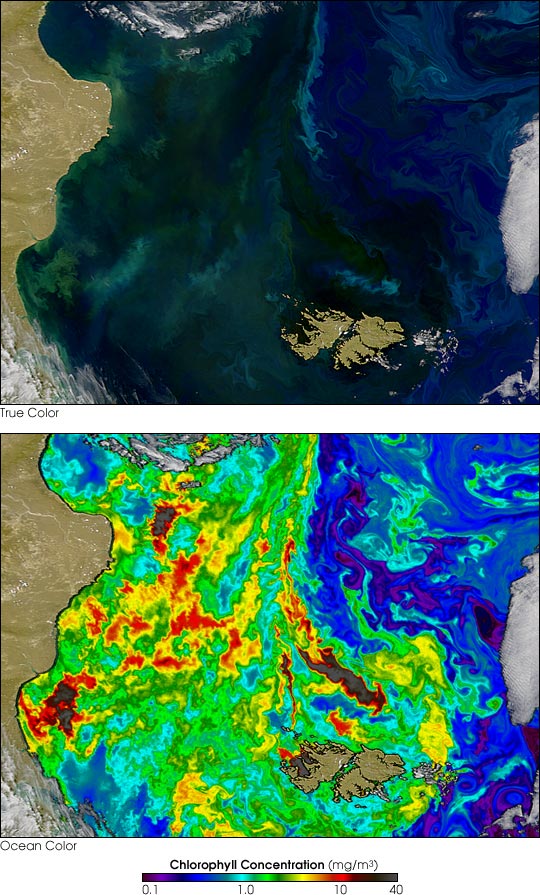


large images:
true color (1.1 MB JPEG)
chlorophyll concentration (1.5 MB JPEG)
As summer rapidly approaches in the Southern Hemisphere, tiny marine plants are taking advantage of the long days by growing vigorously. These images were acquired by the Sea-viewing Wide Field-of-view Sensor (SeaWiFS) on December 8, 2002. The top true-color image shows how the masses of phytoplankton color the water between the east coast of South America and the Falkland Islands. Green and black water indicates the presence of the highest concentrations of phytoplantkon. Chlorophyll causes the green color. In black water, the phytoplankton are absorbing so much sunlight for food that only a little bit of light is reflected back to space. Water tinted brown is filled with sediment flowing from river mouths into the sea. The brightest areas are probably coccolithophores—plants with calcium carbonate shells that reflect light strongly.
The bottom image shows chlorophyll concentration, a measurement of the amount of phytoplankton. This area is particularly rich in phytoplankton in part because of the convergence of the Malvinas and Brazil ocean currents. The turbulent interactions of these currents bring nutrient-rich water to the ocean surface, allowing the phytoplankton to take full advantage of the long days and strong sunlight. For more information, read Convergence Zones: Where the Action Is.
Image courtesy the SeaWiFS Project, NASA/Goddard Space Flight Center, and ORBIMAGE